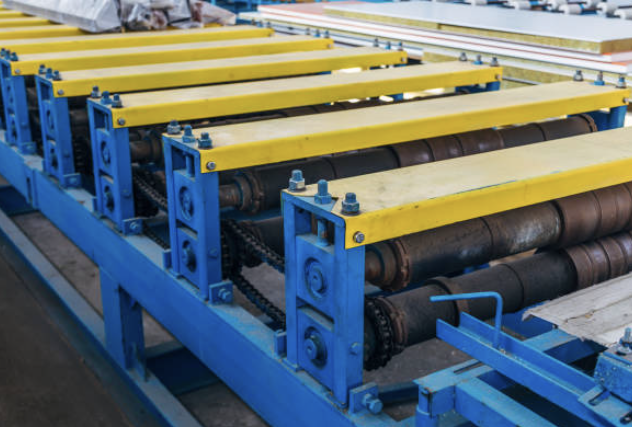
Posted on Thursday, October 31, 2024
In recent years, Gambia’s construction and manufacturing sectors have shown significant growth, driven by the rising demand for locally produced materials. Amidst this industrial evolution, one company, Gambia MetalWorks Ltd., has emerged as a leader in transforming the way building materials are produced in the country. This case study explores how Gambia MetalWorks leveraged roll forming technology to scale operations, overcome challenges, and contribute to the nation’s economic development.
Gambia MetalWorks Ltd. began with a mission to reduce Gambia’s dependence on imported construction materials and provide affordable, high-quality products tailored to local needs. The company’s founders saw a growing demand for roofing materials, metal sheets, and other construction products and believed that producing these items locally would benefit both the company and the broader Gambian economy. To make this vision a reality, they turned to roll forming technology.
While the benefits of roll forming machines were clear, Gambia MetalWorks faced several challenges:
Despite these obstacles, the company was determined to find solutions that would enable them to meet the demands of the local market and grow sustainably.
To overcome these hurdles, Gambia MetalWorks crafted a multi-faceted approach:
With the roll forming machine in place, Gambia MetalWorks saw an immediate transformation in their operations:
The impact of Gambia MetalWorks extended beyond the company itself, providing substantial benefits for the local economy:
For Gambian businesses considering roll forming machines, the experience of Gambia MetalWorks offers valuable insights:
Gambia MetalWorks Ltd. stands as a prime example of how embracing technology can drive growth and independence in emerging economies. By investing in roll forming technology, they have not only positioned themselves as a leader in Gambian manufacturing but also contributed to the country’s economic development. This case study underscores the potential for other Gambian companies to leverage similar strategies, ensuring that “Made in Gambia” becomes a mark of quality and innovation.
This case study showcases the power of roll forming technology to advance manufacturing in Gambia, providing potential buyers with a roadmap for success. Gambia MetalWorks Ltd. serves as a model for sustainable growth, demonstrating that investing in the right technology can yield profound benefits for both the company and the community.

Understanding Coil IDs, Mandrel Sizing, and Shear Pin Safety in Uncoilers
Posted on Wednesday, October 1, 2025
Mismatched sizes can lead to machine damage, downtime, and safety hazards — often evidenced by a shear pin failure.

How Coil Tensile Strength Affects Roll Forming and How to Adjust Your Machine
Posted on Wednesday, October 1, 2025
Changes in tensile strength can significantly affect the finished profile, causing misaligned bends, uneven edges, and out-of-spec parts.

Why Paint Cracks on an Embossing Line Running Pre-Painted Coil and How to Prevent It
Posted on Wednesday, October 1, 2025
This issue not only affects the visual quality of the product but can also lead to increased scrap rates and customer complaints.

The Most Popular Standing Seam Metal Roof Panels in the U.S. — A Comprehensive Guide
Posted on Monday, September 29, 2025
In this post, we’ll explore what panel styles and sizes are most popular in the U.S